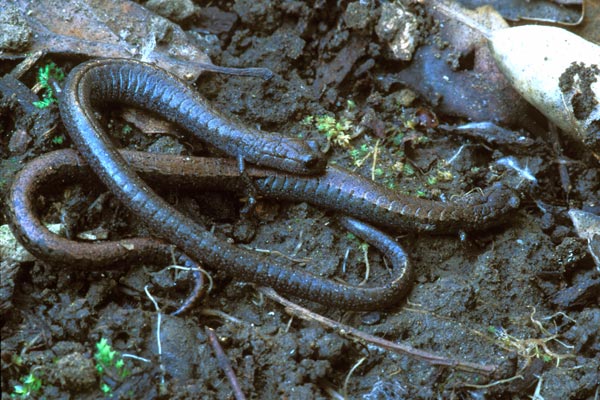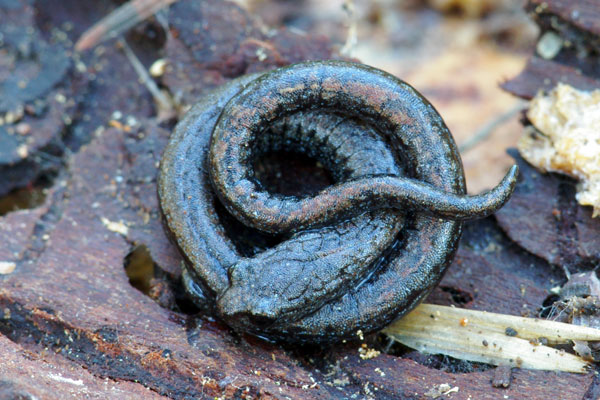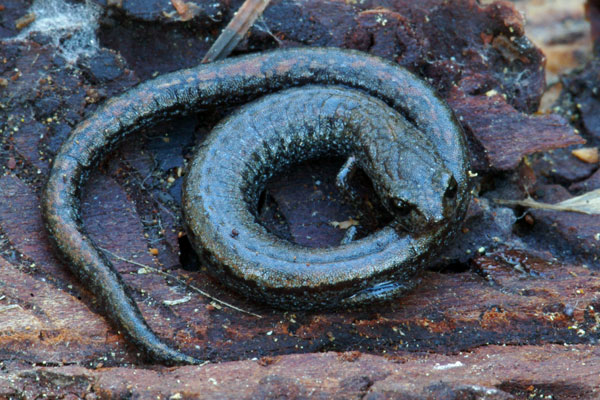
I don't believe these salamanders are doing anything naughty; I think they were just conveniently piled up in the same spot under the log. But only their mothers know for sure.


Of course, a true salamander expert could tell at a glance whether this was a Black-bellied Slender Salamander or a San Simeon Slender Salamander. Well, with a glance at their DNA, anyway. There are a number of extremely subtle physical differences listed in the references, but the few photographs I've seen of B. incognitus look pretty much exactly the same as the larger number of photographs I've seen of B. nigriventris.
Maybe I am the proud discoverer of the first B. incognitus on public land? It's not out of the question, but I doubt it. If you can look at these photographs and tell me how you know which species it is, I'd love to hear from you.
- Batrachoseps incognitus account on AmphibiaWeb
- Batrachoseps nigriventris account on AmphibiaWeb
- Don Roberson has a page discussing all the California Batrachoseps species.
- Batrachoseps incognitus account on CaliforniaHerps.com
- Batrachoseps nigriventris account on CaliforniaHerps.com
- Basey, H. E. 1976. Discovering Sierra Reptiles and Amphibians
- Behler, J. L., King, F. W. 1979. The Audubon Society Field Guide to North American Reptiles & Amphibians
- Crother, B. I. (ed.) 2017. Scientific and Standard English Names of Amphibians and Reptiles of North America North of Mexico, with Comments Regarding Confidence in Our Understanding, Eighth Edition
- Petranka, J. W. 1998. Salamanders of the United States and Canada
- Stebbins, R. C. 2003. Peterson Field Guide to Western Reptiles and Amphibians, Third Edition